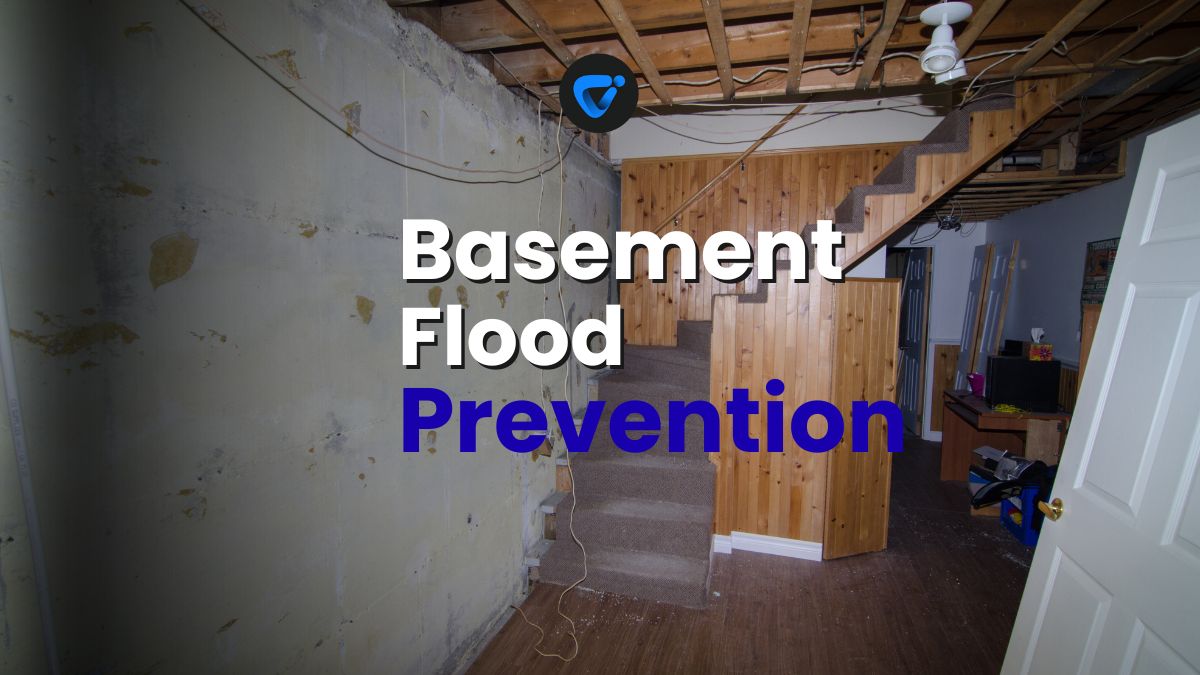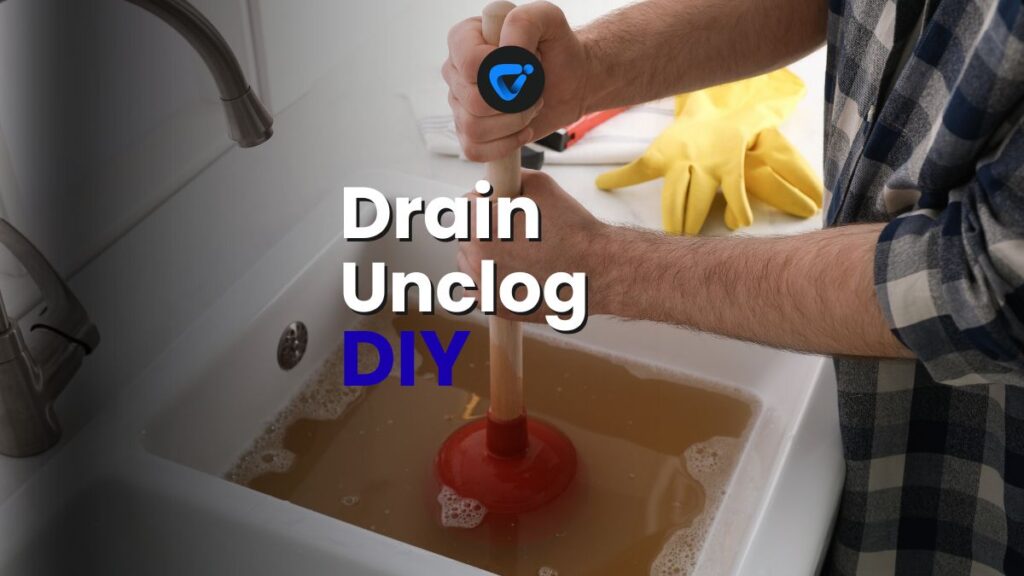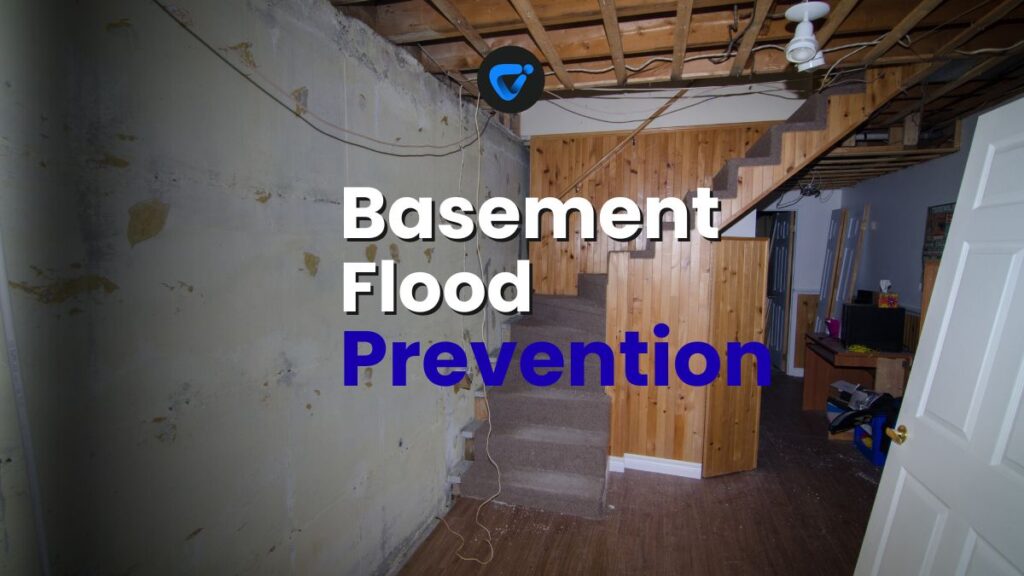
Most people realize their sink isn’t clearing properly only when water starts pooling around their hands. The urge to reach for a chemical drain opener to unclog slow drains comes quickly—and understandably so.

Preventing Basement Flooding
Keep your basement dry! Discover simple upgrades that stop flooding and protect your home from costly water damage.
Yet relying on chemicals ultimately damages plumbing and introduces toxins into the home. Many effective, safer methods remove blockages without risking pipes or exposing family members to harsh fumes or residues.
This home cleaning and maintenance micro-guide explores several powerful alternatives to unclog slow drains naturally. Discover step-by-step processes, practical scripts, and real-life examples you can apply immediately.
Establishing a Routine Simplifies Clog Prevention and Resolution
Following a streamlined routine stops most buildups before they start, making maintenance for slow drains manageable and less time-consuming overall.
Weekly action and mindful use help avoid major backups. Approaching drain care like tidying up after meals means less stress when blockages arise later.
Removing Visible Debris Slows Clogs Early
Start by physically clearing hair, soap bits, or food that collects near drain covers. This prevents larger debris from migrating deeper into pipes and causing clogs.
Use a gloved hand or tweezers weekly to lift gunk off sink and shower drains. If you notice slime buildup, wipe it with a disposable cloth right away.
Check for soapy residue around stoppers and rinse thoroughly during regular cleaning. Setting a weekly reminder encourages consistent action and keeps clogs at bay.
Adopting a Drain Cover Habit Reduces Blockages
Placing mesh screens or drain catchers serves as a daily barrier. They capture hair and debris before it goes down, so most slow drain symptoms lessen over time.
After showers or dishwashing, empty the catchers directly into a trash bin. This step mirrors brushing crumbs off counters—quick, simple, and effective for prevention.
Encourage family members to use drain covers consistently. Mention the new routine in a group chat or post a friendly reminder near high-traffic sinks and tubs.
| Routine Step | Frequency | Time Needed | Key Benefit |
|---|---|---|---|
| Remove Visible Debris | Weekly | 2 min | Prevents buildup at entry point |
| Install Drain Covers | Once | 3 min | Reduces future clogs |
| Clean Stoppers | Monthly | 4 min | Clears hidden gunk |
| Rinse with Hot Water | After Each Use | 15 sec | Flushes away residue |
| Baking Soda Flush | Bi-Weekly | 5 min | Keeps drains fresh |
Using Simple Pantry Ingredients Keeps Drains Flowing
Everyday kitchen staples tackle moderate blockages and slow drains with minimal effort, allowing for immediate intervention as soon as a clog develops.
With just a few pantry items, anyone can unclog slow drains quickly—avoiding expense and the harsh smell of chemical solutions entirely.
Baking Soda and Vinegar Two-Step Reset
This classic pairing breaks down mild grease and organic buildup in sluggish pipes. Start by pouring a generous half-cup of baking soda down the drain.
- Pour baking soda first to coat debris and neutralize odors. This helps loosen clingy residue that causes water to drain slowly or stop completely.
- Follow immediately with one cup of plain white vinegar. The fizzing reaction agitates the blockage physically, sending bubbles through residue and moving debris along more easily.
- Block the drain with a damp towel, which traps the fizz and increases cleaning power. Wait five minutes for the reaction to settle deep in the pipes.
- Flush the drain with boiling water. A steady pour dislodges loosened particles. Watch for improved water flow; repeat the process once if needed.
- Finish by running cool tap water for thirty seconds. This ensures all debris is washed away, and the drain is ready for regular use again.
This sequence fits busy schedules—try it in the evening so your sinks are fresh by morning. Coordinate with household cleaning for an easy wellness upgrade.
Lemon and Salt Scrub for Minor Residue
Cut a fresh lemon in half and dip the cut end into coarse salt. Use it like a scrubber to target visible grime around the drain’s opening.
- Scrub the drain edges with the salty lemon, letting citric acid break down soap scum and odor sources while salt provides gentle abrasion.
- Squeeze as you scrub, ensuring juice covers the drain opening. Wait ten minutes to allow lemon and salt to dissolve lingering organic stains.
- Rinse thoroughly with hot water. This lifts debris and flushes away both lemon pulp and loosened buildup. Repeat as part of a monthly sink freshening routine.
- Share this process with housemates. Show anyone using the kitchen how easy a slice of lemon and handful of salt can keep things flowing.
- Notice improvement in both scent and flow. If the drain remains slow after two scrubs, try the baking soda and vinegar routine for deeper cleaning.
Those who cook regularly benefit most from this natural approach, especially when strong odors or residue appear after heavy use.
Manual Tools Offer Fast Results for Clearing Stubborn Clogs
Hand tools deliver rapid, visible improvement for slow drains when natural methods don’t go deep enough. Simple tools empower every homeowner to resolve most backups in minutes—and without specialty gear.
Plungers and drain snakes each address different scenarios in home maintenance. With minimal prep, these tools consistently restore water flow and promote cleaner pipes, making the effort worthwhile.
Plunger Techniques for Sink and Tub Blockages
Choose a cup plunger designed for flat drains. Dampen the outer edge with water for a tighter seal. Position the plunger directly over the drain.
Push down slowly to expel air. Then use quick, forceful pumps perpendicular to the surface. Repeat ten to twelve times in one sequence for best results.
Release slowly and check drainage. If water clears, rinse with boiling water. If the drain is still slow, try again or move to a snake for deeper clogs.
Drain Snake Best Practices for Deeper Blockages
Uncoil the hand auger and gently insert the tip into the drain opening. Rotate the handle with steady pressure, working through resistance slowly.
Pull back with small, twisting motions once you feel the snake catch on debris. Remove the tool and discard any hair, string, or gunk attached to the coil.
Finish by flushing the drain thoroughly with hot water. This helps clear any remaining loose debris and restores flow. Clean and store the snake after use.
IF Residue Persists, Try Advanced DIY Mixtures
Persistent slow drains sometimes need extra effort. Combining ingredients from your cleaning kit creates slightly stronger, but still safe, cleaning solutions for most household clogs.
Focus on blends that complement what you’ve already tried. These mixtures are gentle on pipes and don’t produce toxic fumes, so anyone can use them with confidence.
| Mixture | Main Ingredients | Target Clog Type | Takeaway |
|---|---|---|---|
| Baking Soda & Salt | 1/2 cup each | Soap & hair | Try for recurring tub clogs |
| Boiling Water Flush | 1-2 quarts water | Grease films | Repeat weekly for kitchens |
| Hydrogen Peroxide & Baking Soda | 1/4 cup peroxide + soda | Stubborn odors | Safe odor neutralizer |
| Borax & Vinegar | 1/4 cup each | Mineral deposits | Try for older homes |
| Dawn Dish Soap & Hot Water | 2 tbsp soap + 1-2 cups | Food clogs | Dissolves greasy residues |
Clear Communication Prevents Recurrence Among Households
Brief reminders and visual cues steer everyone away from habits that contribute to slow drains. In shared households, these cues keep small issues from becoming bigger plumbing headaches.
When everyone aligns on drain-friendly habits, natural maintenance routines stick. This makes it much easier to unclog slow drains and avoid future buildup, all with minimal reminders.
Design Simple Notes for High-Risk Sinks
Post a laminated note near bathroom sinks: “No hair, floss, or wipes down the drain!” Friendly signage keeps awareness high and reduces slip-ups among guests or kids.
Share a short video demonstration in house group chats, showing how to empty catchers into the trash. Visual learning helps make the habit stick with everyone, every time.
Ask for feedback so suggestions feel collaborative, not critical. Most people appreciate being included in the maintenance process rather than simply assigned tasks.
Consistent Schedules for Kitchen Maintenance
Setting a regular cleaning day—Friday before takeout night, for example—makes unclog slow drains routines predictable. This anchors the habit during a time when people gather around the kitchen.
Keep supplies like baking soda and spare drain screens in an easy-to-reach bin under the sink, labeled clearly for quick access. This prevents excuses and encourages immediate action.
Rotate responsibilities if you share a space. For example, one person checks drain covers, another wipes counters, and a third does a baking soda flush.
- Wipe away any residual grease from cookware before washing. This prevents fat from coating pipes and causing clogs in the first place.
- Brush loose hair from sink basins after shaving or washing. Use tissue and toss directly in the wastebasket to stop strands from entering the plumbing.
- Never dispose of grindable food waste (like eggshells or potato peels) in sinks without garbage disposals—they build up quickly and block narrow pipes.
- Keep a small strainer over the drain whenever washing fruits and veggies to catch stray debris, seeds, or peels.
- Promptly remove accidental spills of pasta, rice, or potato starch—which swell and cause quick obstructions—using paper towels instead of letting them wash away.
These actions, taken consistently, ensure even new household members develop good habits that keep slow drains away without much discussion.
Seasonal Adjustments Keep Drains Moving Year-Round
Changing routines slightly as the seasons shift keeps your efforts to unclog slow drains effective, even when pipes face new strains from cold weather or holiday cooking.
Adding seasonal check-ins to your calendar reduces surprises—transforming simple routines into a permanent solution, no matter the month.
Winter: Watch for Stiff Pipes and Extra Debris
When temperatures drop, hot water rinses matter more. Cold pipes let grease solidify inside, so run boiling water extra often after meals or showers in winter months.
Heavier holiday baking sends flour and sticky food bits into sinks, which settle and turn stubborn in chilly pipes. Discourage guests from putting leftover dough or batter down the drain.
Keep rock salt, rather than chemical de-icers, for exterior drains—especially if you maintain outdoor kitchens or backyard hose bibs as well. Label containers to reduce confusion among helpers.
Spring and Summer: Manage Dirt and Outdoor Debris
With garden work and outdoor parties, more sand, grass, and dirt find their way into indoor plumbing systems—particularly in mudrooms and kitchens.
Post a reminder note by utility sinks: “Rinse muddy shoes outside, not here.” Instruct everyone to shake soil outside first, and consider hose washing large planters before tub cleanup.
Avoid pouring plant water with soil run-off into regular drains. Designate buckets for outdoor emptying and keep visual reminders near back doorways or laundry rooms.
Conclusion: Adopting Practical Routines for Lasting Results
Combining thoughtful routines, practical pantry solutions, and clear communication ensures slow drains stay under control and plumbing remains free of harsh chemical exposure.
Simple, proactive steps prevent the bulk of clogs and empower each household member to participate in upkeep. These strategies make unclogging slow drains a routine, manageable part of home care.
Apply these micro-guide tips as written or adapt them to suit your home’s unique needs. Over time, you’ll see clear, lasting results—cleaner pipes and peace of mind, every day.
Frequently Asked Questions
If you’ve tried multiple natural methods, used a snake, and water still backs up quickly, it’s time to call a plumber. Foul odors, gurgling noises, or leaks below the sink also signal a deeper issue that requires professional assessment.
Boiling water works well for metal pipes but can damage PVC or older plastic materials. Let water cool to about 150 degrees Fahrenheit before pouring into plastic fixtures, and always pour slowly to prevent warping.
Natural methods work for mild to moderate blockages, but stubborn or recurring clogs might need mechanical tools or professional cleaning. Start with at-home approaches, and escalate if symptoms persist for more than a week.
Yes. Drain covers and catchers prevent debris from entering in the first place, so chemical-free flushes remain effective longer and overall buildup slows dramatically. They complement—not replace—routine flushes for lasting results.
Make drain care a shared responsibility through visual reminders, friendly notes, or regular discussions. Rotate tasks so everyone participates. Demonstrate steps for clarity, and give positive feedback when habits stick. Consistent routines foster collaboration and better results.

How to Replace a Damaged Window Screen Easily
Torn screen? No problem! Learn how to replace a damaged window screen easily and keep bugs out for good. Read on!


